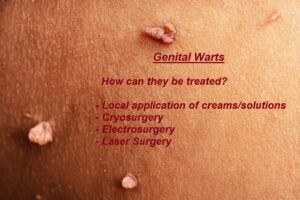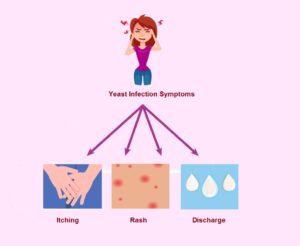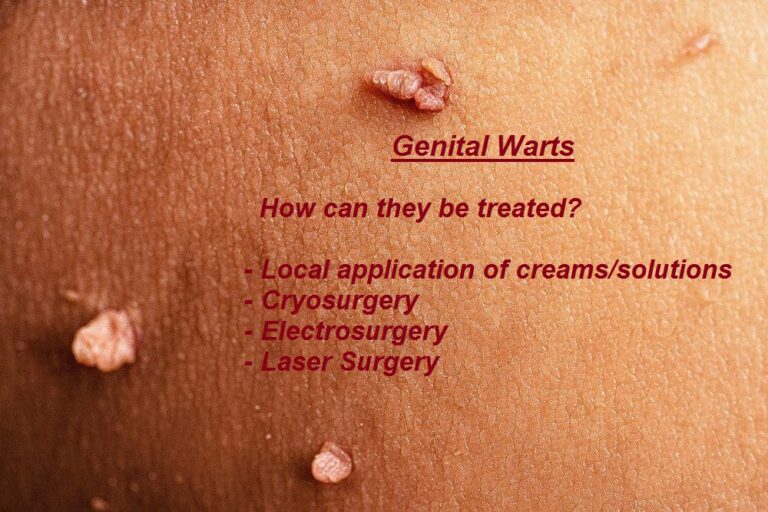The external female genital anatomy are those anatomical parts which are easily visible to the eye. These structures are also together known as the ‘Vulva’.
The Vulva includes the Mons Pubis, the Labia Majora, the Labia Minora, the Vestibule, the Clitoris, the Bartholin’s Glands and, in virgins, the Hymen. The hymen partially covers the vaginal opening.
Each of these parts play an important role in a woman’s reproductive and sexual health. They contribute to sexual arousal, childbirth and overall reproductive health.

Mons Pubis
The mons pubis is a soft, rounded area of fatty tissue that covers the pubic bone at the front of the female body. It is also known as the mons venereum or the mount of Venus.
It is located just above the vulva and extends downwards to the two labia majora on either side.
The mons pubis is covered with pubic hair in adult women, which helps protect the sensitive skin and helps regulate body temperature. The hair is typically coarser and darker than hair on other parts of the body.
Before puberty, the mons pubis is relatively flat and smooth. It has less fat, is noticeably flattened, and is hairless before menstruation begins. During puberty, the hormonal changes causes deposition of fat in the mons and make it grow thicker and larger and become more pronounced. Pubic hair starts to grow on the mons as well as on the outer surface of the labia majora.
After menopause, some women may experience a loss of fatty tissue in the mons pubis, which can make it appear less rounded and less prominent. The pubic hair becomes thin and grey.
The mons pubis has a number of functions. It helps protect the pubic bone and the vulva, and it acts as a cushion during sexual activity. It also contains a special type of sebaceous glands known as apocrine glands which secrete pheromones, a class of chemicals with a distinctive scent that heightens sexual attraction .
Labia Majora
The labia majora are two large, fleshy folds of skin that extend from the mons pubis to the perineum. They are located on either side of the vulva and help protect and support the other external reproductive organs.
The labia majora contain fat and loose connective tissue and sweat glands. They correspond to the scrotum in the male. The outer surface of each labium is pigmented and hairy, the inner surface is smooth and sensitive. This hair is thicker, rougher and generally more curly than in other parts of the body.
Before puberty, the labia majora are relatively small and flat. During puberty, the hormonal changes in a girl’s body cause the labia majora to grow and become more pronounced. In adult women, the size and shape of the labia majora can vary widely, but they typically measure 2-4 centimeters in length and are rounded or oval in shape.
The labia majora contain sebaceous glands that produce oil to keep the skin moisturized and sweat glands that help regulate body temperature. They are also rich in nerve endings, making them sensitive to touch and pressure.
The main function of the labia majora is to protect the vaginal and urethral openings from mechanical irritation, dryness, and infections. They also contribute to the lubrication and sexual stimulation of the vestibule and clitoris during vaginal intercourse.
Labia Minora
The labia minora are two thin and delicate folds of soft skin located in between the two labia majora.
Before puberty, the labia minora are relatively small and thin. Hormones released after puberty causes them to become larger and more prominent. In adult women, they typically measure 1-2 centimeters in length and are narrow and elongated in shape.
The size and shape of the labia minora can vary widely among different women. In fact, the two labia may be of different shape and size in the same women.
One or both labia may extend beyond the labia majora if they are large enough to do so. Their interior surfaces continue to be in contact
Between the folds of the labia minora is the vestibule, which is the area surrounding the vaginal and urethral openings. This area is highly sensitive and contains the openings to the Bartholin’s glands, which produce a natural lubricating fluid to keep the vaginal area moist.
The upper portion of each labia minora passes over the clitoris to form a fold called the prepuce of the clitoris. The lower portion passes beneath the clitoris to form its frenulum.
The labia minora are not covered with pubic hair, but instead have a smooth surface that is covered with a thin layer of skin.
The main function of the labia minora is to help protect the clitoris, urethral opening and vaginal opening from irritation or injury.
The labia minora contain a rich network of blood vessels and nerve endings, making them highly sensitive to touch and pressure. They become turgid with blood during sexual arousal and have an important role to play in sexual health.
Since the labia are so delicate and thin, they are prone to tearing during labor and childbirth. Even after giving birth, bleeding can persist, and postpartum infections are frequent.
Clitoris
The clitoris is a highly sensitive organ located at the upper junction of the two labia minora in the front of the vulva. It is usually about 1-2 centimeters in length and can sometimes be covered by the clitoral hood.
The clitoris is considered as the female equivalent of the penis. It shares the same glans, prepuce, and two corpora cavernosa that are attached to the pubic bones as the male penis
The clitoris is the primary source of female sexual arousal. It contains a large number of nerve endings, making it highly sensitive to touch, pressure and stimulation. Stimulation of the clitoris can lead to sexual pleasure and orgasm.
Vestibule
The vestibule of the vulva is the area located between the two labia minora. It is a highly sensitive area that is rich in nerve endings . It is very important in contributing to female sexual arousal and sexual health.
The vestibule contains the vaginal and urethral openings. The vaginal opening leads to the vagina and the urethral opening leads to the urethra and the bladder.
The opening of the vagina in virgins is covered by a thin incomplete membrane called the ‘hymen.’ This membrane can be stretched or torn during sexual activity, childbirth, or other physical activities.
Injuries in the vestibular region, particularly the paraurethral region, are common during labour and childbirth..
The vestibule also contains the openings of the ducts of the Bartholin’s glands, which produce a natural lubricating fluid to keep the vaginal area moist.
Hymen
The hymen is a thin membrane that partially covers the vaginal opening located in the vestibule of the vulva. It’s usually about 1-2 millimeters thick and can vary in shape and size from woman to woman.
In most women, it forms a ring around the vaginal opening (annular shape). But it may also be crescenteric (like the crescent moon) or Cribriform (perforated or net-like).
The hymen’s main function is to partially protect the vaginal opening and the tissues inside and to prevent foreign bodies like dust or stones from entering the vagina.
The hymen can be stretched or torn during sexual activity, childbirth, or other physical activities, such as horseback riding, gymnastics or inserting a tampon. It can also naturally thin and stretch over time, even without sexual activity.
It’s important to note that the presence or absence of an intact hymen does not necessarily indicate whether a woman has had sexual intercourse, as the hymen can be stretched or torn in many other ways.
Bartholin’s Glands
The Bartholin’s glands are two small pea sized glands located near the vaginal opening, one on either side. The ducts from the gland open in the vestibule of the vulva.
Their main function is to produce a thick, lubricating fluid that keeps the vaginal area moist. This is important to reduce friction during sexual activity and improve sexual health and comfort.
Bartholin’s glands are small and are normally difficult to feel. But they can become enlarged if the ducts get blocked due to any cause like an infection. Fluid can build up in the glands resulting in a condition called Bartholin’s cyst. The cyst forms a small, painless lump near the vaginal opening. If the cyst becomes infected, it can turn into an abscess ( Bartholin’s abscess), which can be painful and cause discomfort.
In most cases, surgery is necessary to treat Bartholin’s cysts and abscesses. Rarely, medicines and hot packs can decrease the cysts but they usually recur after some time,
Skene’s Glands
The Skene’s glands, also known as the paraurethral glands, are located on either side of the urethral opening and are responsible for producing a fluid that helps to lubricate the vestibule and surrounding tissues. This fluid helps in lubrication during sexual intercourse.
Vestibular Bulbs
The vestibular bulbs are two small, spongy structures located on either side of the vaginal opening in the vestibule of the vulva.
The vestibular bulbs are part of the clitoral complex, and they become engorged with blood during sexual arousal, causing the vaginal opening to expand and making the vaginal area more sensitive to touch.
Perineum
The female perineum is the triangular shaped area of skin and muscle that lies between the vulva and the anus.
The perineum has several important functions. It supports the structures of the vulva and helps in sexual arousal and intercourse. During childbirth, the perineum may stretch widely and may require an episiotomy (a surgical cut) to make more room for the baby to be born.
In some cases, there may be perineal tears of different degrees which need to be repaired.
Read Questions and Answers on Pregnancy and Gynecology

Prenatal Vitamins – Why they are important
Prenatal Vitamins helps development of the baby and ensures a healthy pregnancy

How are Genital Warts treated?
Genital Warts are caused by the Human Papilloma Virus (HPV) and is one of the most common sexually transmitted diseases.

Pregnancy care in Guwahati: What to Expect
Pregnancy care involves caring for both the pregnant mother as well as the unborn baby in the uterus.

I think I have a yeast infection
I think I have a yeast infection. I had vaginal itching earlier and it is itching again now. What should i do?

I think I have Bacterial Vaginosis
I think I have bacterial vaginosis. I have a vaginal discharge with a fishy odor since the last few days. When should I see a doctor?

I am in early pregnancy and have dark brown discharge
Early pregnancy bleeding. What is wrong with me? What should I do?







